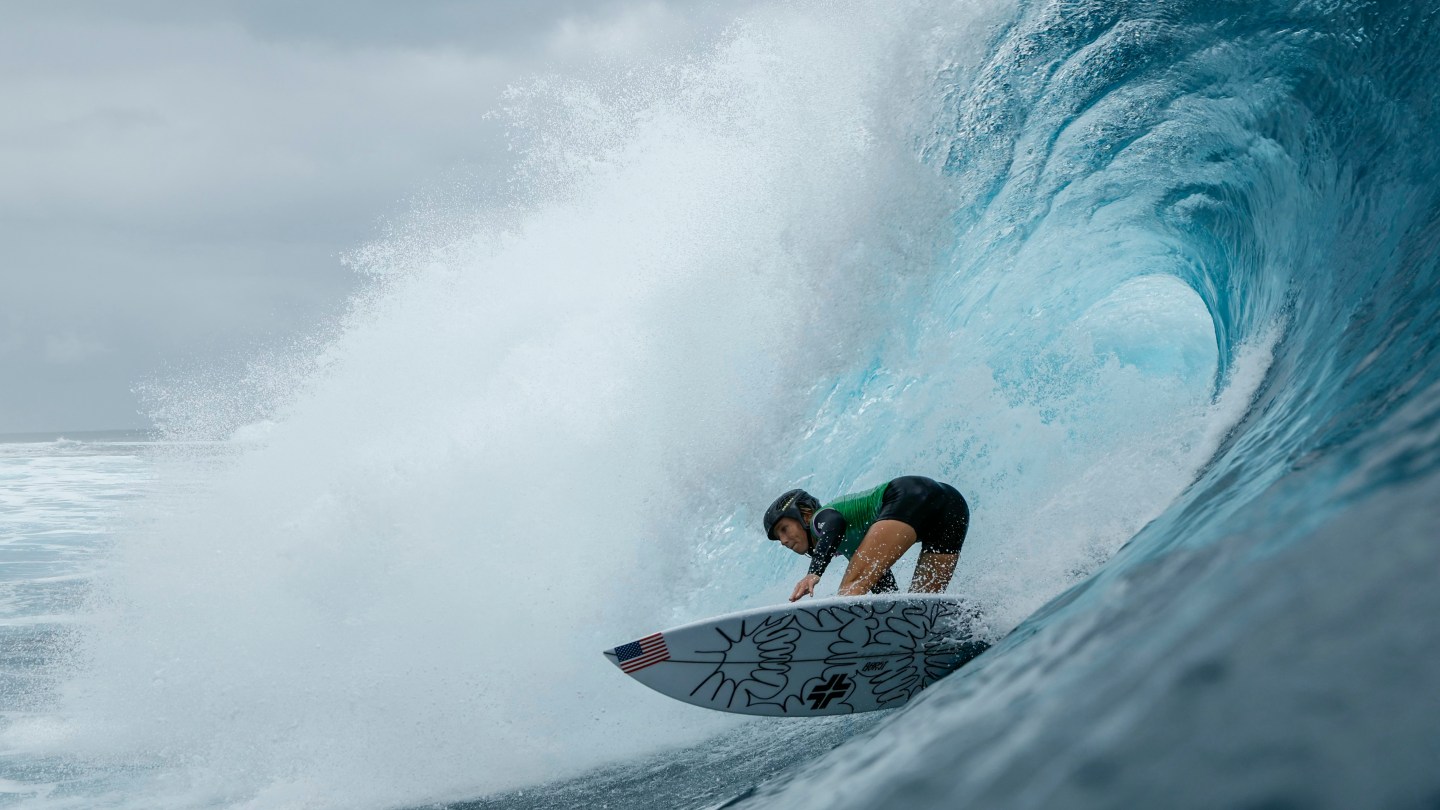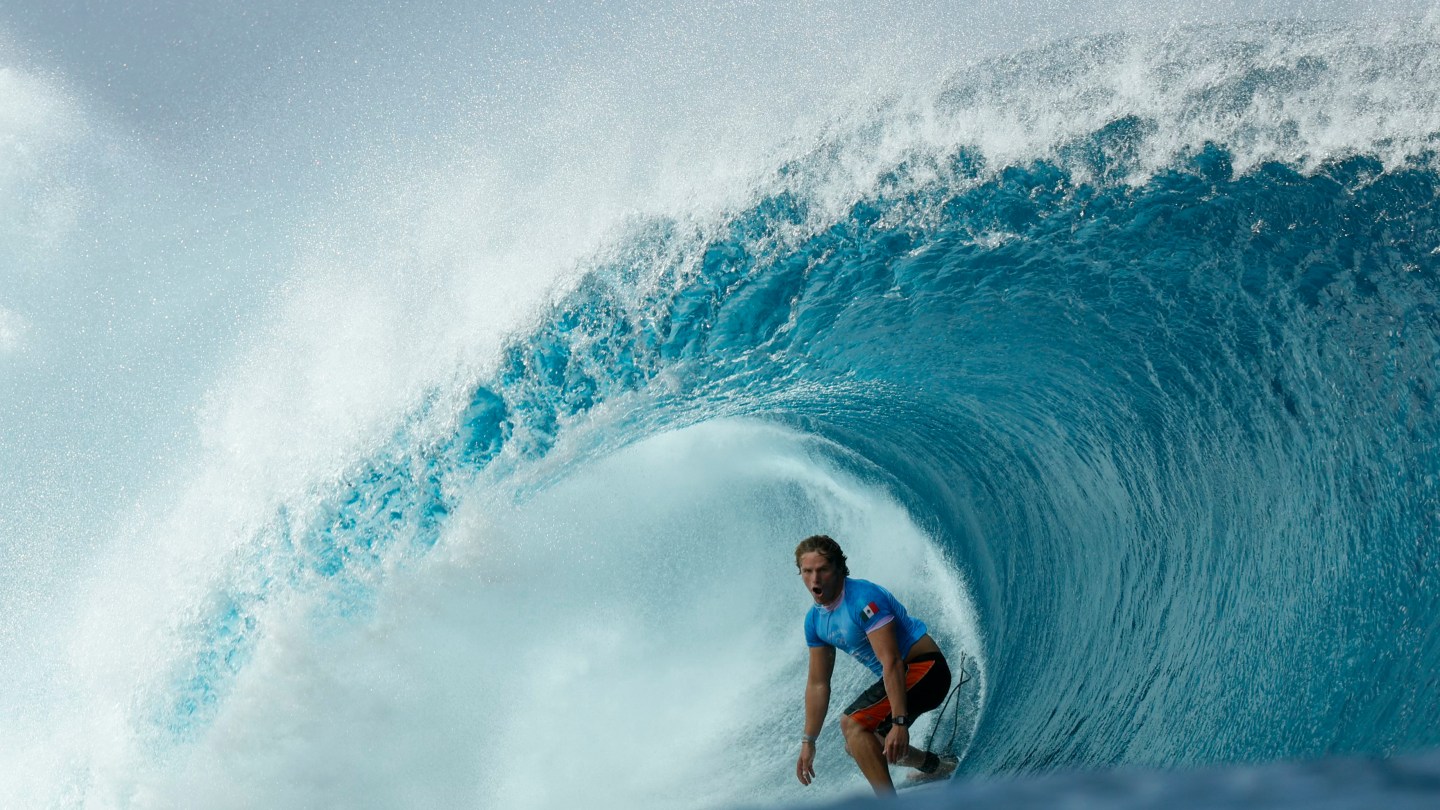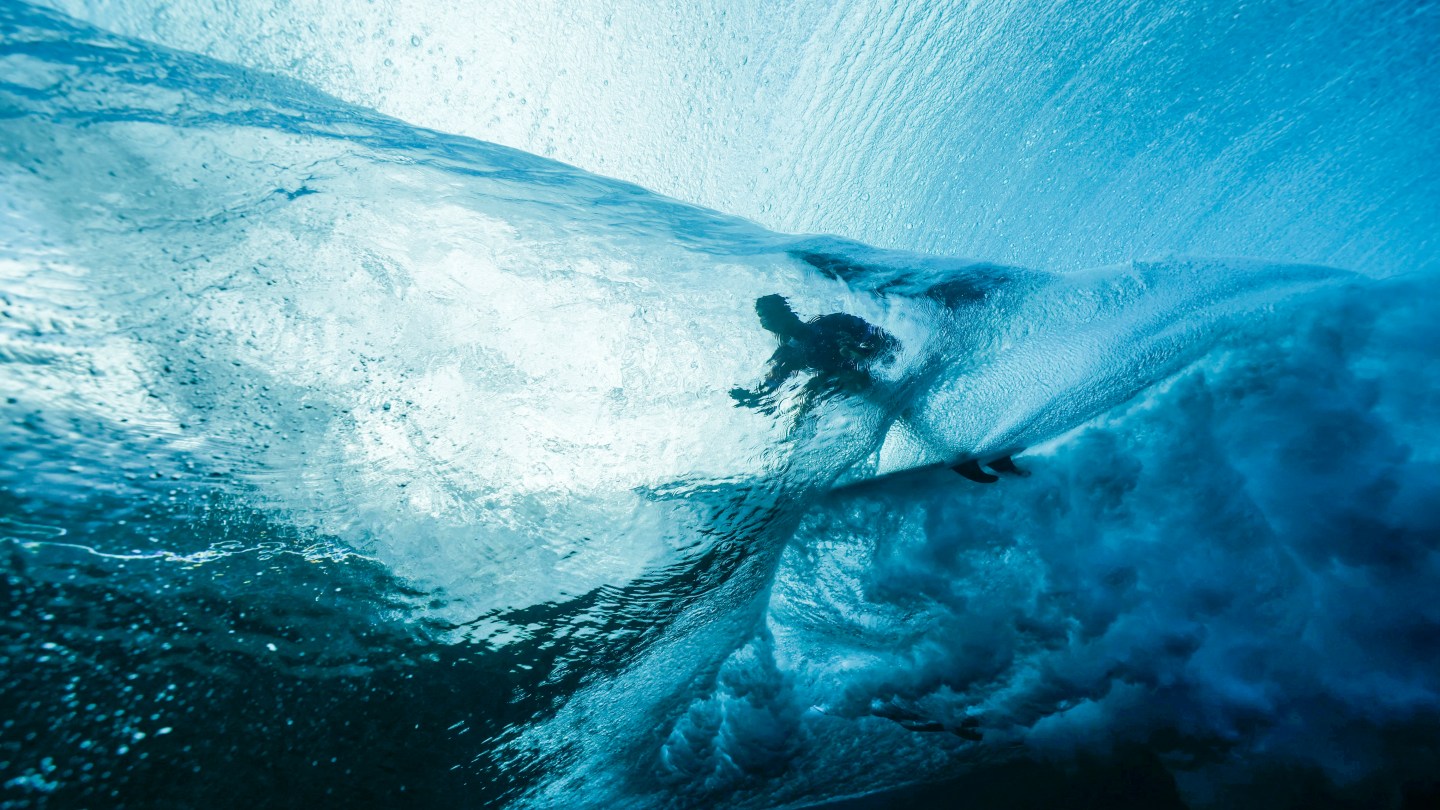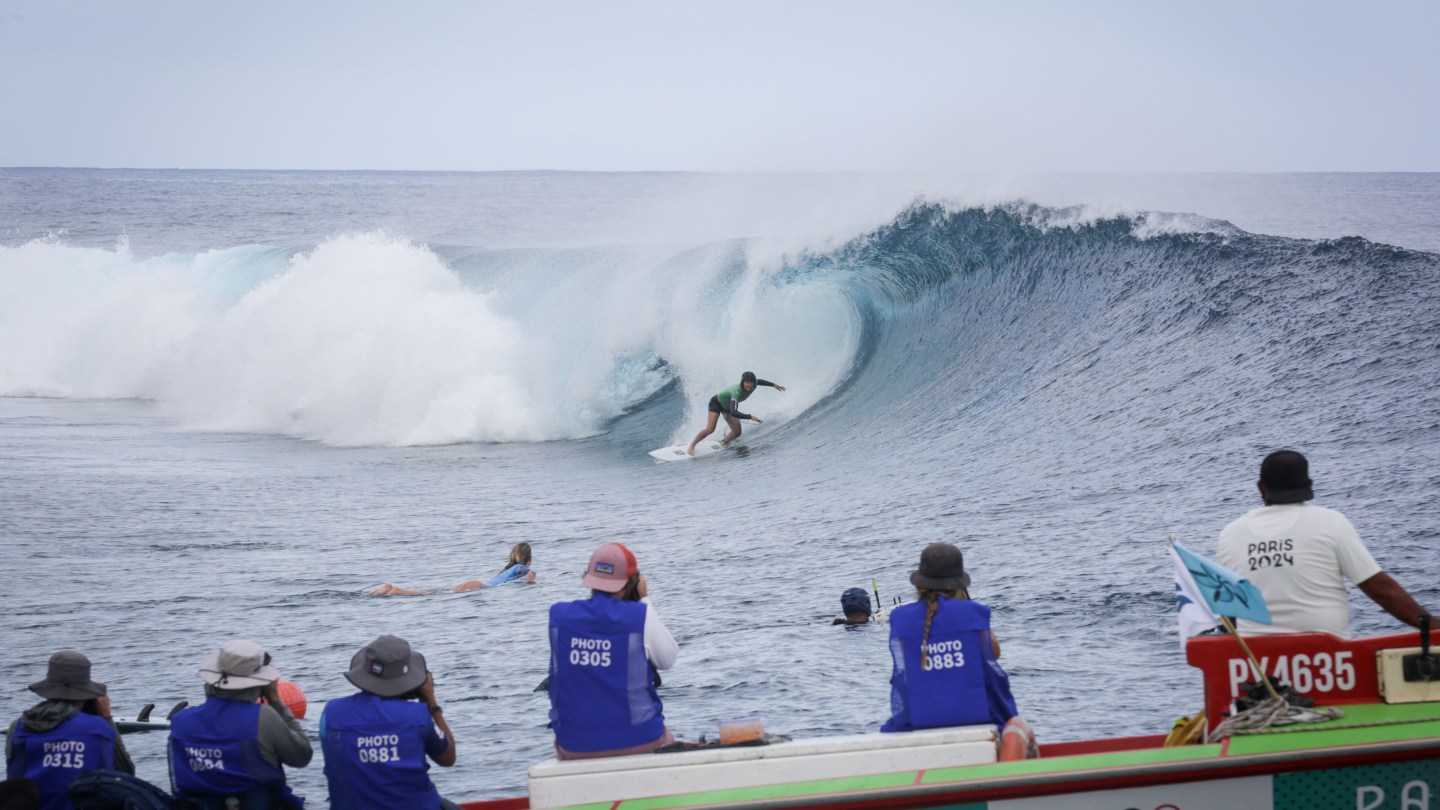I've been on an Olympic surfing kick, partly because surfing is cool, and mostly because my Canadian roommate is a huge surfing enthusiast and the only TV in our apartment is in the room I've been subletting. I would be sitting on the couch, watching skateboarding, and then boom! The door would open and we would have to switch over to surfing to watch another qualifying round. There are worse roommates.
This is the second time surfing has been in the Olympics, and as you might have guessed there are very few gnarly waves in the English Channel. Instead, France is taking advantage of the vestiges of its empire to host surfing outre-mer, in Teahupo’o, a village on the island of Tahiti in French Polynesia.
On the days when the ocean has been agreeable, it's busy out there in the water. Safety teams are racing around on their jet skis to scoop up surfers who've crashed after collapsing under a breaking wave, and coaches and teammates watch nervously from a flotilla of boats lined up nearby.
But every time, my eye has been caught by another person drifting in the waves. Shooting for Agence France-Presse, Ben Thouard is the only photographer who's accredited to be taking pictures in the water. Equipped with his Canon camera and a pair of fins, he does his job with no flotation devices, transmitting his photos live from the open sea. It's a feat I'm endlessly impressed by. This guy has to work his camera and worry about composition, all the while fighting against the tides and avoiding the dangerous reef below his feet.
The results have been stunning though: the way he gets so close and personal to the surfers and thus the wave itself. Here are some shots Thouard's taken from just above the waterline:


And of course, he's been capturing the action from beneath the waves too, giving us a glimpse at what surfing looks like from the underside.


As a photography enthusiast myself, I can testify that it gets pretty exhausting to be shooting for hours at a time, even more so when you have to lug equipment around. In the spring, when I was running around the Columbia campus taking pictures, I carried about 15 pounds of gear. Thouard's set-up is heavier, at 20 pounds, and by his own estimation, he has to swim around eight hours a day in order to document everything at the Olympics. At least he's got buoyancy on his side.
The rest of the surfing photographers shoot from surrounding boats positioned at the shoulder of the wave, which still gives them a great vantage point of the competition. And albeit on a lower level, Thouard's colleagues are also facing a pretty rugged working environment. With the rocky waters by Teahupo’o, the boats are constantly moving. According to AP photographer Gregory Bull, onboard the boats, the photographers go without shoes so they can be prepared to swim in the event the boat capsizes or they fall overboard. On top of that, their equipment needs to be fully waterproofed because seafoam is constantly blowing everywhere. And let me tell you, protecting your already-expensive camera from water isn't cheap. The kind of water housing that Thouard uses comes from the brand Aquatech, where a decent set-up starts at $2,000.


Kind of like the way the internet believes that the dressage horses deserve a medal, I think the surfing photographers should get a little something too. Although, I suppose some of them are getting their time in the spotlight. After his photo of Gabriel Medina floating reverently above the waves went viral, Thouard's fellow AFP photographer Jerome Brouillet became the man of the hour. The AFP even did a little photoshoot of him on Thursday. They deserve their moment in the sun.






